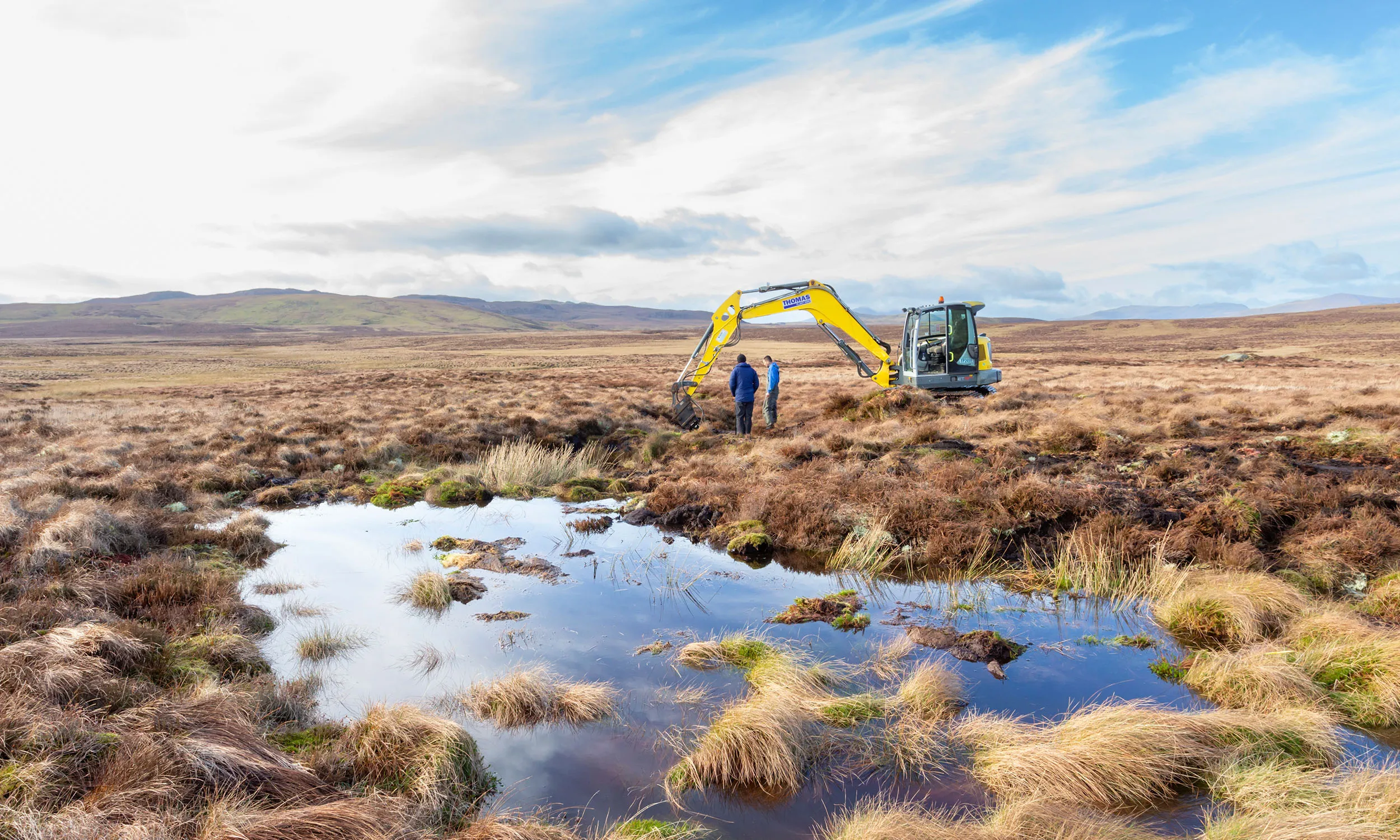News
White-tailed Eagles disappear in suspicious circumstances
We’re offering a £10,000 reward for information that leads to a conviction in these cases.
Climate change, caused by the widespread use of fossil fuels, is resulting in more extreme weather across the world and driving wildlife declines as habitats are lost. Could the UK’s peatlands help us tackle the nature and climate crisis?

When we use fossil fuels, such as coal, oil and gas to power our cars, heat our homes or run our factories, they release carbon dioxide (CO2) and other greenhouse gases. These become trapped in the earth’s atmosphere, causing global warming. The amount of CO2 in the atmosphere has risen by about 50% since the start of the industrial revolution, with 2023 declared the warmest year on record globally. So, to tackle climate change, we need to tackle CO2 levels.
This is where peatlands can come in. Peatlands, also known as peat bog, are a special type of wetland covering 2.7 million hectares of the UK. They are important for biodiversity and for the health of the planet. When healthy, peatlands lock away carbon, keeping CO2 out of the atmosphere. But at the moment over 80% of our peatlands are in a poor condition. To stop them leaking carbon and enable them to absorb even more carbon, it’s vital that we restore peat bogs. That’s why peatland conservation is a key part of the RSPB’s land management work.
We’re working across the UK on a number of peatland restoration projects. These include upland sites such as RSPB Geltsdale and RSPB Dove Stone in northern England, RSPB Forsinard Flows in Scotland, the Garron Plateau in Northern Ireland, and RSPB Lake Vyrnwy in mid Wales. We’re also working on lowland sites including RSPB Lakenheath in Suffolk, RSPB Greylake in Somerest, and RSPB Campfield Marsh in Cumbria.
Meet Ben Wilcox, the Peatland Project Officer at RSPB Lake Vyrnwy. In this short film, he explains how peat is formed, why it’s so special, and how we can save and restore it. Plus, enjoy some stunning footage of the fascinating wildlife that lives there.
As well as acting as huge carbon sinks, locking away CO2, healthy peatlands improve our water quality and support natural flood management. The sphagnum moss, which grows on peatland, acts as a huge sponge, working to counter flash floods in times of heavy rainfall. It also creates a rough surface which slows the movement of water down, in contrast with damaged bog and especially areas of bare peat.
Many peatlands are in a poor condition. Decades of draining, overgrazing, burning, tree planting, extraction, and, in some areas, atmospheric pollution means that almost 80% of our peatland is currently in a damaged and deteriorating state. That’s why we’re taking steps to restore peatlands. If you’re a gardener, you can also help by only buying peat-free compost.

RSPB Peatland Project Officer Ben Wilcox describes sphagnum moss as the ‘unassuming powerhouse of a bog’. It may have the look of a soggy mess, but it’s crucial in the formation of a peat bog. Sphagnum can hold about 25 times its weight in water and it’s thanks to this super-soaked moss that peat is created. At RSPB Dove Stone in northern England, we’re planting sphagnum moss as part of the restoration efforts.
In 2023, we joined forces with Co-op in a three-year strategic partnership to protect UK peatland, starting with a £1m investment from the sales of compostable carrier bags in its stores. Co-op’s initial investment is supporting the ongoing restoration and long-term management of upland peatland in Scotland and Wales, equivalent in size to around 400 football pitches.
World Peatlands Day is celebrated on 2 June every year. Launched by the International Peatland Society, it shines a light on the importance of peat bogs for biodiversity and the need for peatland conservation.

Just as peatland conservation can help tackle the nature and climate crisis, there are other ways in which nature can help us manage the problems we face. Find out how we can work with nature in our woodlands, along our coast and more to save the planet.